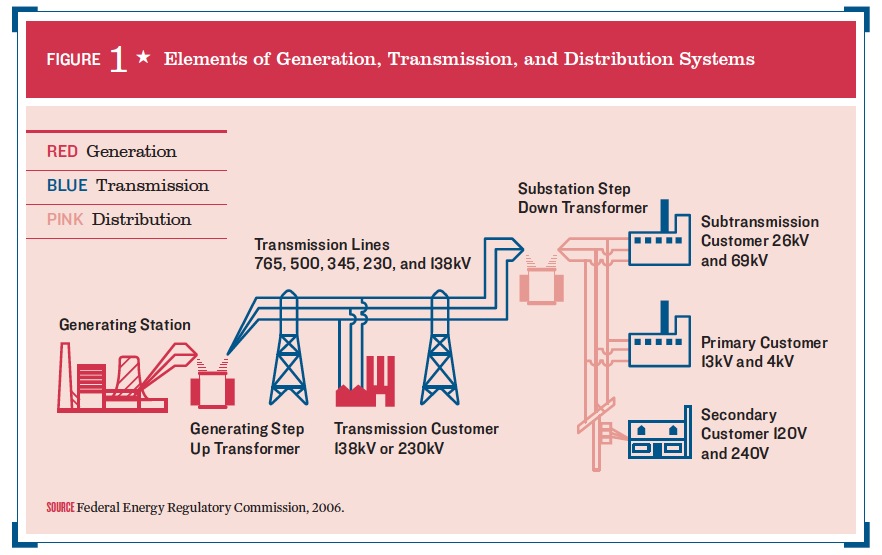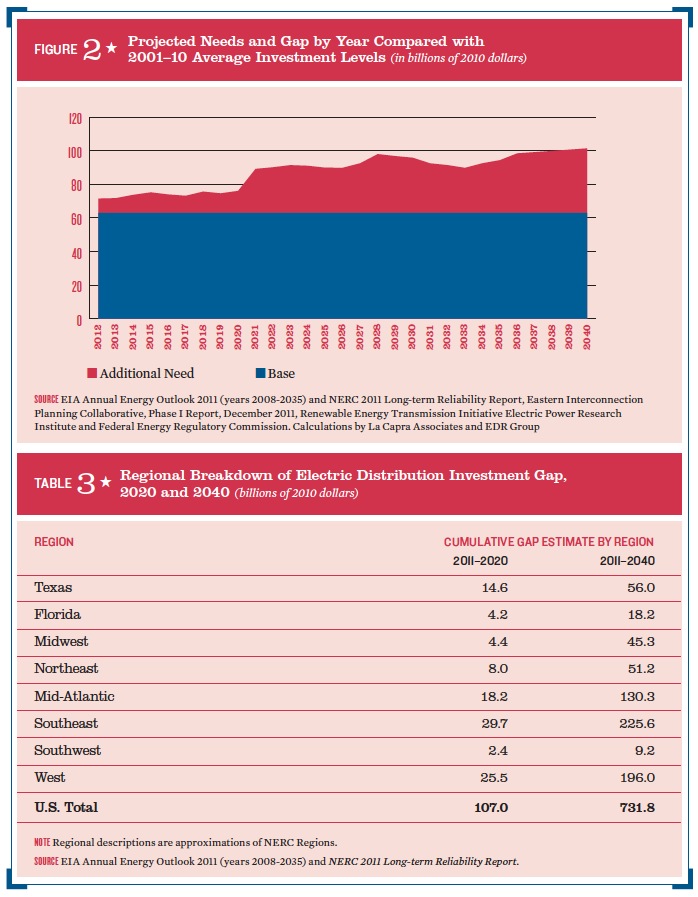AMERICAN SOCIETY OF CIVIL ENGINEERS
Executive Summary
This report illustrates the importance of electric power generation, transmission and distribution systems to the national economy. The analysis performed focuses on a trend scenario that presumes the mix of electricity generation technologies (e.g. electricity generation from oil, natural gas, coal, nuclear, hydro, wind, solar) continues to evolve as reflected in recent trends, including a long-term evolution towards smart grid technologies.
Context
Electricity relies on an interconnected system that is composed of three distinct elements, as described below and illustrated by Figure 1:
1. Generation facilities—including approximately 5,800 major power plants and numerous other smaller generation facilities;2
2. High-voltage transmission lines—a network of over 450,000 miles that connects generation facilities with major population centers;3 and
3. Local distribution systems that bring electric power into homes and businesses via overhead lines or underground cables. The first two elements are usually referred to as the bulk power system.
The United States’ system of generation, transmission and distribution facilities was built over the course of a century. Centralized electric generating plants with local distribution networks were started in the 1880s and the grid of interconnected transmission lines was started in the 1920s. Today, we have a complex patchwork system of regional and local power plants, power lines and transformers that have widely varying ages, conditions, and capacities.
The aging of equipment explains some of the equipment failures that lead to intermittent failures in power quality and availability. The capacity of equipment explains why there are some bottlenecks in the grid that can also lead to brownouts and occasional blackouts. These concerns make it critical to understand what investments may be needed to keep the system in a state of good repair, and what implications any shortfall could have on the nation’s economy.
During the past decade, electric energy infrastructure has improved through an upturn in investment, and the negative economic impacts noted in studies of 10 and 20 years ago have been partially mitigated. However, more investment is needed to further reduce the incidence of service disruptions to households and businesses. The needs to maintain and update existing electric energy infrastructure, to adopt new technologies, and to meet the demands of a growing population and evolving economy over the next 30 years will impose significant requirements for new energy infrastructure investment.
About the American Society of Civil Engineers
www.asce.org
“Founded in 1852, the American Society of Civil Engineers (ASCE) represents more than 147,000 members of the civil engineering profession worldwide, and is America’s oldest national engineering society. ASCE’s vision is to position engineers as global leaders building a better quality of life…Comprised of Regional Councils, Younger Member Councils, Sections, Branches, Student Chapters and Clubs and International Student Groups, the Society and its volunteers are fully engaged in making this a better world by design.”
Tags: American Society of Civil Engineers, ASCE, Electricity, Failure to Act








 RSS Feed
RSS Feed